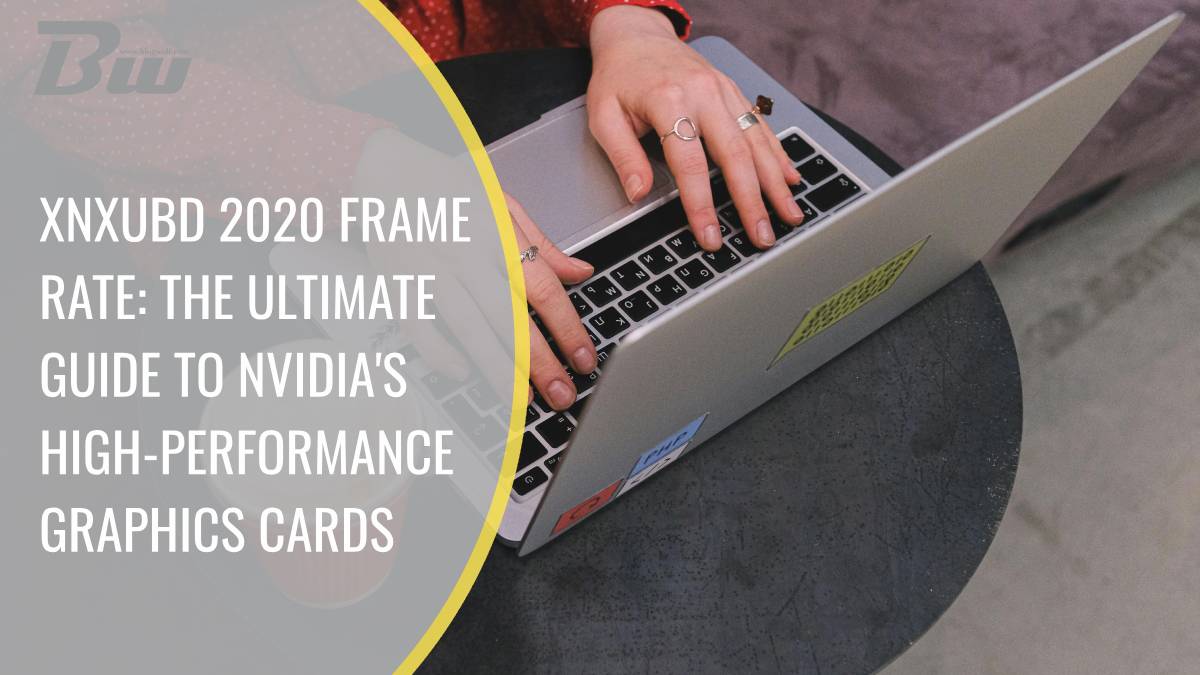Table of Contents
Nvidia has long been a leader in the world of high-performance graphics cards, delivering top-tier GPUs for gaming, content creation, and AI applications. One of the key metrics that sets Nvidia’s cards apart is the frame rate, often abbreviated as FPS (frames per second). Higher frame rates are essential for smoother gameplay and enhanced performance in graphics-intensive applications. The term Xnxubd 2020 refers to various benchmarks or tests that enthusiasts use to assess the performance of Nvidia’s cards, particularly in relation to frame rate. In this guide, we’ll explore the importance of frame rates, the benefits of Nvidia’s high-performance GPUs, and how to optimize them.

Why Frame Rate Matters
Frame rate directly influences the smoothness of video playback or gaming. It refers to the number of frames displayed on a screen per second. A higher FPS results in smoother visuals, while a lower frame rate can make the visuals choppy. For gamers and content creators, frame rate is critical as it impacts reaction time, immersion, and overall performance.
Common frame rates include:
– 30 FPS: Considered acceptable for basic video playback or casual gaming.
– 60 FPS: A standard for most modern gaming, offering smoother performance.
– 120 FPS or higher: Ideal for competitive gaming or professional content creation, providing ultra-smooth visuals and a fast refresh rate.
Nvidia’s high-end GPUs are known for their ability to deliver impressive frame rates across a variety of applications, whether you’re playing the latest AAA game or rendering high-definition videos.
Xnxubd 2020 Benchmarks and Nvidia’s GPU Performance
When we talk about Xnxubd 2020 frame rate, we refer to the capability of Nvidia graphics cards to handle high frame rates in various games and applications. Nvidia’s RTX 30 series and RTX 20 series have been notable in delivering cutting-edge performance:
1. RTX 3080: Known for hitting 120 FPS or more in popular titles like “Cyberpunk 2077” and “Call of Duty: Warzone.”
2. RTX 3070: Strikes a balance between price and performance, comfortably handling 60–90 FPS in demanding titles.
3. RTX 3060: An affordable option while still capable of hitting 60+ FPS at high settings.
These cards are optimized for ray tracing, DLSS (Deep Learning Super Sampling), and other technologies that enhance both performance and visual fidelity.
How to Optimize Your Nvidia Graphics Card for Maximum Frame Rate
To get the most out of your Nvidia GPU and achieve optimal frame rates, follow these steps:
1. Update Nvidia Drivers
Keeping your drivers up to date ensures that your graphics card is running efficiently. Nvidia frequently releases updates that improve performance, especially for newly-released games.
2. Use Nvidia Control Panel
In the Nvidia Control Panel, you can adjust settings to prioritize performance. Lowering graphical settings like anti-aliasing, shadows, and textures can boost frame rates, especially in older systems.
3. Enable DLSS
DLSS uses AI to upscale lower-resolution images to higher resolutions, maintaining high frame rates while still delivering sharp visuals.
4. Monitor Performance with Nvidia GeForce Experience
The Nvidia GeForce Experience software allows you to optimize games based on your system specifications. It also provides real-time monitoring tools for frame rates.
Nvidia’s high-performance graphics cards are engineered to deliver exceptional frame rates, making them a favorite among gamers and creators alike. By optimizing settings and leveraging technologies like DLSS, users can maximize the capabilities of their GPUs. If you’re aiming for the best performance, keeping your drivers updated and adjusting in-game settings are key to achieving higher frame rates. With Nvidia’s cutting-edge hardware, the gaming and visual experience continues to reach new heights.

